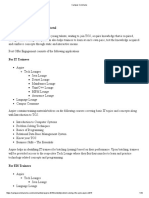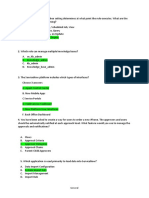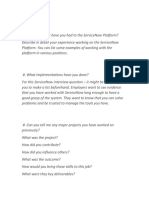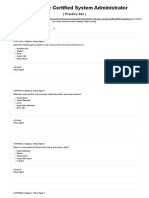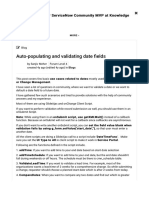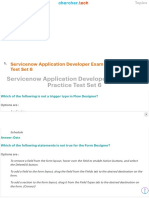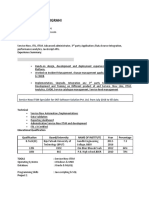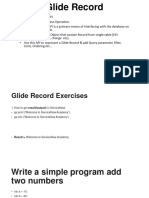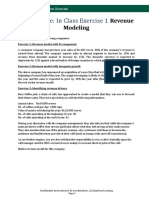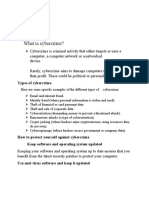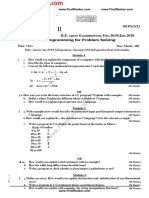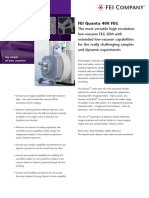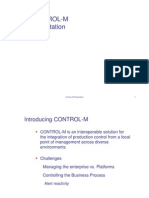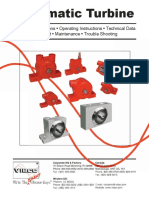0% found this document useful (0 votes)
2K views3 pages100 Scenario Based ServiceNow Scripting Questions
The document contains 100 scenario-based scripting questions for ServiceNow, covering various topics such as Incident Management, Client Scripts, Business Rules, GlideAggregate, and more. Each section includes specific tasks or challenges that require scripting solutions, aimed at enhancing skills in ServiceNow development. The scenarios range from basic to advanced, addressing real-world applications and integrations within the ServiceNow platform.
Uploaded by
sachin kambhapuCopyright
© © All Rights Reserved
We take content rights seriously. If you suspect this is your content, claim it here.
Available Formats
Download as PDF, TXT or read online on Scribd
0% found this document useful (0 votes)
2K views3 pages100 Scenario Based ServiceNow Scripting Questions
The document contains 100 scenario-based scripting questions for ServiceNow, covering various topics such as Incident Management, Client Scripts, Business Rules, GlideAggregate, and more. Each section includes specific tasks or challenges that require scripting solutions, aimed at enhancing skills in ServiceNow development. The scenarios range from basic to advanced, addressing real-world applications and integrations within the ServiceNow platform.
Uploaded by
sachin kambhapuCopyright
© © All Rights Reserved
We take content rights seriously. If you suspect this is your content, claim it here.
Available Formats
Download as PDF, TXT or read online on Scribd
/ 3



